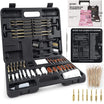Planting bulbs in the fall is a wonderful way to ensure a vibrant and colorful garden in the spring. Fall is the ideal time to plant many types of bulbs, allowing them to establish roots over the winter and bloom beautifully when the weather warms up. Here’s a comprehensive guide to help you successfully plant bulbs this fall.
Choosing the Right Bulbs
Selecting the right bulbs is the first step to a successful fall planting.
- Spring-Flowering Bulbs: Choose bulbs that bloom in the spring, such as tulips, daffodils, crocuses, and hyacinths. These bulbs need to be planted in the fall to bloom in the spring.
- Healthy Bulbs: Select firm, plump bulbs without any signs of mold, cuts, or soft spots. Healthy bulbs have the best chance of thriving.
Preparing the Soil
Good soil preparation is essential for the health and growth of your bulbs.
- Well-Drained Soil: Ensure the soil is well-drained to prevent bulbs from rotting. If your soil is heavy clay, consider adding compost or sand to improve drainage.
- Soil Enrichment: Mix in some compost or bulb fertilizer to provide essential nutrients for the bulbs.
Planting Bulbs
Proper planting techniques will help your bulbs grow strong and healthy.
- Depth and Spacing: Plant bulbs at a depth of about two to three times their height. For example, a bulb that is 2 inches tall should be planted 4-6 inches deep. Space bulbs according to the recommendations for each type, usually 4-6 inches apart.
- Pointy Side Up: Plant bulbs with the pointed end facing up. This is where the stem will emerge.
- Group Planting: For a natural look, plant bulbs in groups rather than single rows. This creates a more vibrant and fuller display.
Watering
Watering is crucial to help bulbs establish roots before winter.
- Initial Watering: Water the bulbs thoroughly after planting to help settle the soil and eliminate air pockets.
- Consistent Moisture: Keep the soil slightly moist but not waterlogged. Bulbs need moisture to grow roots but too much water can cause them to rot.
Mulching
Mulching helps protect bulbs from extreme temperature fluctuations and retains soil moisture.
- Organic Mulch: Apply a layer of organic mulch, such as straw, shredded leaves, or wood chips, over the planting area. This also helps suppress weeds.
Caring for Bulbs Over Winter
With a little care, your bulbs will stay healthy through the winter and be ready to bloom in the spring.
- Protection from Frost: In areas with harsh winters, add an extra layer of mulch to insulate the bulbs from freezing temperatures.
- Rodent Protection: If rodents are a problem, consider using a wire mesh or bulb cages to protect your bulbs from being eaten.
Spring Blooming
With proper care, your bulbs will reward you with a beautiful display of flowers in the spring.
- Remove Mulch: As the weather warms, gradually remove the mulch to allow the shoots to emerge.
- Fertilizing: Apply a balanced fertilizer in early spring to give your bulbs a nutrient boost as they start to grow.























Leave a comment
All comments are moderated before being published.
This site is protected by hCaptcha and the hCaptcha Privacy Policy and Terms of Service apply.